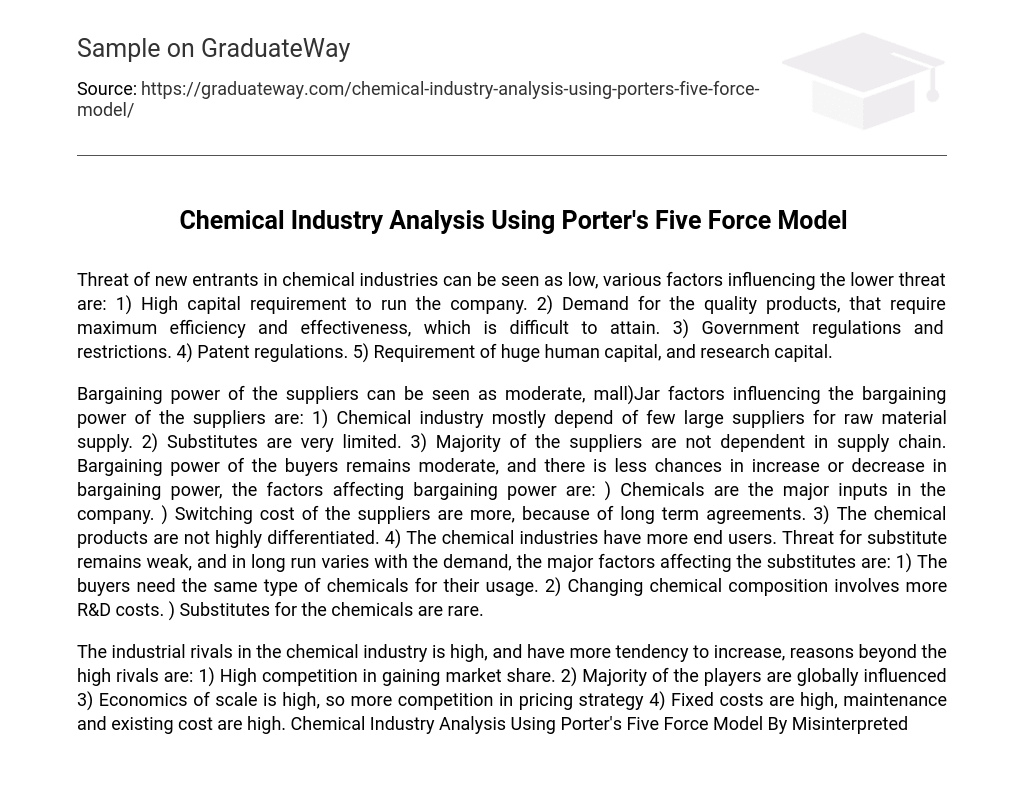Threat of new entrants in chemical industries can be seen as low, various factors influencing the lower threat are: 1) High capital requirement to run the company. 2) Demand for the quality products, that require maximum efficiency and effectiveness, which is difficult to attain. 3) Government regulations and restrictions. 4) Patent regulations. 5) Requirement of huge human capital, and research capital.
Bargaining power of the suppliers can be seen as moderate, mall)Jar factors influencing the bargaining power of the suppliers are: 1) Chemical industry mostly depend of few large suppliers for raw material supply. 2) Substitutes are very limited. 3) Majority of the suppliers are not dependent in supply chain. Bargaining power of the buyers remains moderate, and there is less chances in increase or decrease in bargaining power, the factors affecting bargaining power are: ) Chemicals are the major inputs in the company. ) Switching cost of the suppliers are more, because of long term agreements. 3) The chemical products are not highly differentiated. 4) The chemical industries have more end users. Threat for substitute remains weak, and in long run varies with the demand, the major factors affecting the substitutes are: 1) The buyers need the same type of chemicals for their usage. 2) Changing chemical composition involves more R&D costs. ) Substitutes for the chemicals are rare.
The industrial rivals in the chemical industry is high, and have more tendency to increase, reasons beyond the high rivals are: 1) High competition in gaining market share. 2) Majority of the players are globally influenced 3) Economics of scale is high, so more competition in pricing strategy 4) Fixed costs are high, maintenance and existing cost are high. Chemical Industry Analysis Using Porter’s Five Force Model By Misinterpreted





